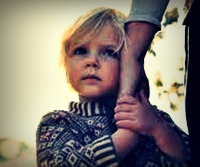Of the many factors that ultimately determine a child's success in life, the capacity to successfully interact and insert oneself among a diversity of people ranks among the top. Social navigation requires both a broad repertoire of skills and a deep understanding of shifting dynamic forces that shape relationships. Developing these capacities requires engagement with a broad range of social events. Yet, most children prefer the safety of familiar peers and places, narrowing their choices due to fear of feeling awkward and uncomfortable. Their social world becomes divided into the favored, or those they enjoy spending time with, and everyone else.
If your child has settled into this stifling pattern consider the following coaching tips to help them find the confidence to step out of their comfort zone.
Identify the drawbacks of a socially limited lifestyle.
Narrow children live in a bubble of individual preferences and interests, avoiding that which is different and ignoring others who they perceive as not fitting their "social mold." They travel within their "comfort roads," talking to the same peers at school, doing the same activities after school, and resisting the challenges of change. Striking up conversations with new people, pursuing new opportunities, and socially stretching themselves to deeper levels of interaction within the world of people are considered awkward and uncomfortable. Proactive parents coach narrow children to turn what feels awkward into opportunity for social growth.
Pinpoint where situations offer the possibility of social successes.
Ignoring opportunities and inhibiting responses has become so ingrained that narrow children do not see where windows of social opportunity open. Explain how windows are present when passing a peer in a mall, noticing a familiar person in the community, or answering a phone. Emphasize the importance of expressing warmth and sincerity, and asking questions as a way of advancing their sociability. Help them understand how certain catchphrases such as "thanks for calling," "good to see you," "I hope I see you soon" and "how have you been doing?" exude social confidence. These steps help them transform their "social signature" from black and white to color.
 Stress how conversation is the key to a more mature social identity.
Stress how conversation is the key to a more mature social identity.
Rather than rise to the occasion, narrow children tend to converse with those outside their favored circle in an abrupt and dismissive manner. In body language, tone, and choice of words, they appear to be saying, "I can't wait to get out of this situation." Help them understand how evident this is to others and leaves a lasting impression in people's minds. Caving into this discomfort creates "opportunity cost" when the message about them gets out to more and more people who form opinions without even knowing them. It doesn't occur to others that were feeling awkward. Observers tend to see it as arrogant, aloof, or self-centered, and the ripple effect means that such news travels fast.
Review scenarios with an eye focused upon social successes and areas for improvement.
Parents can pick from a multitude of situations that contain rich examples for children to learn from. Overnight guests who act entitled and unappreciative, peers who initiate "cold calls" as a way of reaching out before a trip both will be taking, or dinner conversations that are not particularly interesting to the child, are all fodder for real life "social studies" Challenge your child to learn from the obvious errors of their peers, remind your child of their emotionally flat responses to past interpersonal encounters and push your child to make the phone call they have been avoiding to the dread of discomfort. Greater social confidence comes from expanding their comfort zone, not shrinking it.
More parenting articles by Dr. Richfield
Dr. Steven Richfield is an author and child psychologist in Plymouth Meeting, PA He has developed a child-friendly, self-control/social skills building program called Parent Coaching Cards now in use in thousands of homes and schools throughout the world. His book, "The Parent Coach: A New Approach To Parenting In Today's Society," is available through Sopris West (sopriswest.com or 1-800-547-6747) He can be contacted at director@parentcoachcards.com or 610-238-4450. To learn more, visit www.parentcoachcards.com.
Ed. note: Detailed information on parenting skills here.
Visit Dr. Steven Richfield's site The Parent Coach, right here at HealthyPlace
next: Preparing The Aspergers Young Adult For The Social Challenges Of College ~ back to: Parenting Articles Table of Contents
 I'm not sure
I'm not sure  Stress how conversation is the key to a more mature social identity.
Stress how conversation is the key to a more mature social identity.